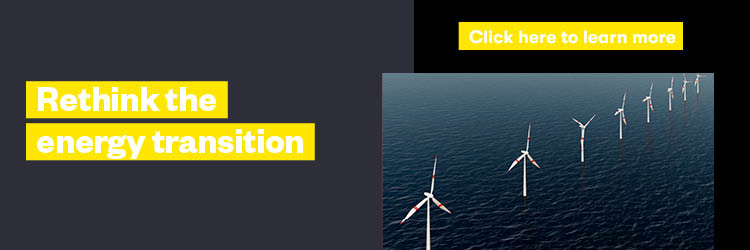
Alex Helpenstell
Director, Energy Transition Strategy, EY Parthenon

Alwyn Hopkins
Advanced Manufacturing and Mobility Sustainability Leader,
EY UK LLP

Kiran Savjani
Director, Energy Transition Strategy, EY Parthenon

Anu Bhambi
Partner, UK Energy
Transition Strategy Lead,
EY Parthenon
Aviation and maritime must align investments across value chains for low-carbon fuels to help both sectors decarbonise.
Aviation and maritime account for about 2% and 3% of global CO2 emissions, respectively. Despite being distinct forms of transport, similar regulatory pressures are compelling both industries to accelerate decarbonisation — and they face common challenges on this journey.
Parallel financial pressures towards decarbonisation
Both industries face evolving regulatory measures to reduce carbon. In aviation, the Carbon Offsetting and Reduction Scheme for International Aviation (CORSIA) will be fully implemented by 2027 while, in maritime, the EU Emission Trading System (ETS) will put a new price on emissions from 2024.
Alwyn Hopkins, Advanced Manufacturing and Mobility Sustainability Leader at Ernst & Young LLP (EY UK LLP), explains: “Fiscal policy, plus disclosure and ‘command and control’ regulations are increasingly applying pressure to decarbonise the two industries.”
A necessary shift to lower-carbon fuels
For many aviation and maritime applications, electrification and hydrogen power remain difficult to implement. “Although electrification is a viable option for smaller planes and vessels, long-haul transatlantic flights and international cargo ships require liquid biofuels or e-fuels,” insists Alex Helpenstell, Director of Energy Transition Strategy at EY Parthenon which focuses on biofuels and energy transition strategies.
Moreover, investment in advanced fuels offers clear benefits. “Low-carbon fuels and more efficient fuel use will both play a role to enable a lower carbon footprint for both industries. The knock-on effect is then scaling new technologies, facilities and entire supply chains across the low-carbon fuel industry to support the transition.”
However, challenges include the current high costs of low-carbon fuels and the technical challenges in building novel, commercial-scale facilities. “Government and industry will need to work together to support First of a Kind (FOAK) projects as they prove technical and commercial viability,” says Kiran Savjani, Director of Energy Transition Strategy at EY Parthenon “Regulatory, strategic and financial support now are key to unlocking capital flows and driving costs down over the long term.”
Although electrification is a viable option
Alex Helpenstell
for smaller planes and vessels, long-haul
transatlantic flights and international cargo
ships require liquid biofuels or e-fuels.
Waste streams and novel feedstocks
“There is also the challenge of getting access to feedstocks,” says Helpenstell. Feedstock, which is typically dispersed, then requires aggregation for biofuel conversion. “The goal is moving to biofuels in the near term while e-fuels scale in the longer term,” he adds.
“Biofuels have historically been produced from vegetable oils and food products; we’re moving away from that into waste streams, like agricultural and forestry wastes or food and plastic wastes, otherwise destined for landfills. So, building supply chains to aggregate these waste streams in the right locations for the feedstock to be accessible is a clear challenge.” Coordinated investment is required to clean up these waste streams and make them homogenous and suitable for use in biofuel refineries.
Savjani also notes the potential of novel feedstocks like carinata, specially cultivated for their oils without competing with agriculture. However, developing these markets requires significant effort. “We’re looking at a 10-year horizon before the market can really drive increased volumes of feedstocks,” he says.
Quick, coordinated response for decarbonisation
To boost feedstock production and convert it into liquid fuels for aviation and maritime transport at scale, government incentives and financial support systems are essential.
A cross-cutting view on investment could benefit both industries. “Currently, a lot of development isn’t necessarily maximising value for both industries,” says Hopkins. For example, the UK’s Advanced Fuels Fund has predominantly allocated projects narrowly focused on Sustainable Aviation Fuel development.
“A lot of coordination is needed, from feedstock production to the supply chain and getting the fuel into engines,” explains Anu Bhambi, Partner, UK Energy Transition Strategy Lead, EY Parthenon . In the case of aviation, for example it may require evolution of storage and fuelling systems, as well as potential additives.
“That’s why maritime and aviation operators, policymakers and fuel providers need to work closely together if we’re going to deliver infrastructure and production of the fuel volumes we need, whilst avoiding cannibalisation,” urges Bhambi.
EY teams advise on decarbonisation pathways for companies in manufacturing and transport. To learn more, visit ey.com/en_uk
The views reflected in this article are the views of the author and do not necessarily reflect the views of the global EY organisation or its member firms.



